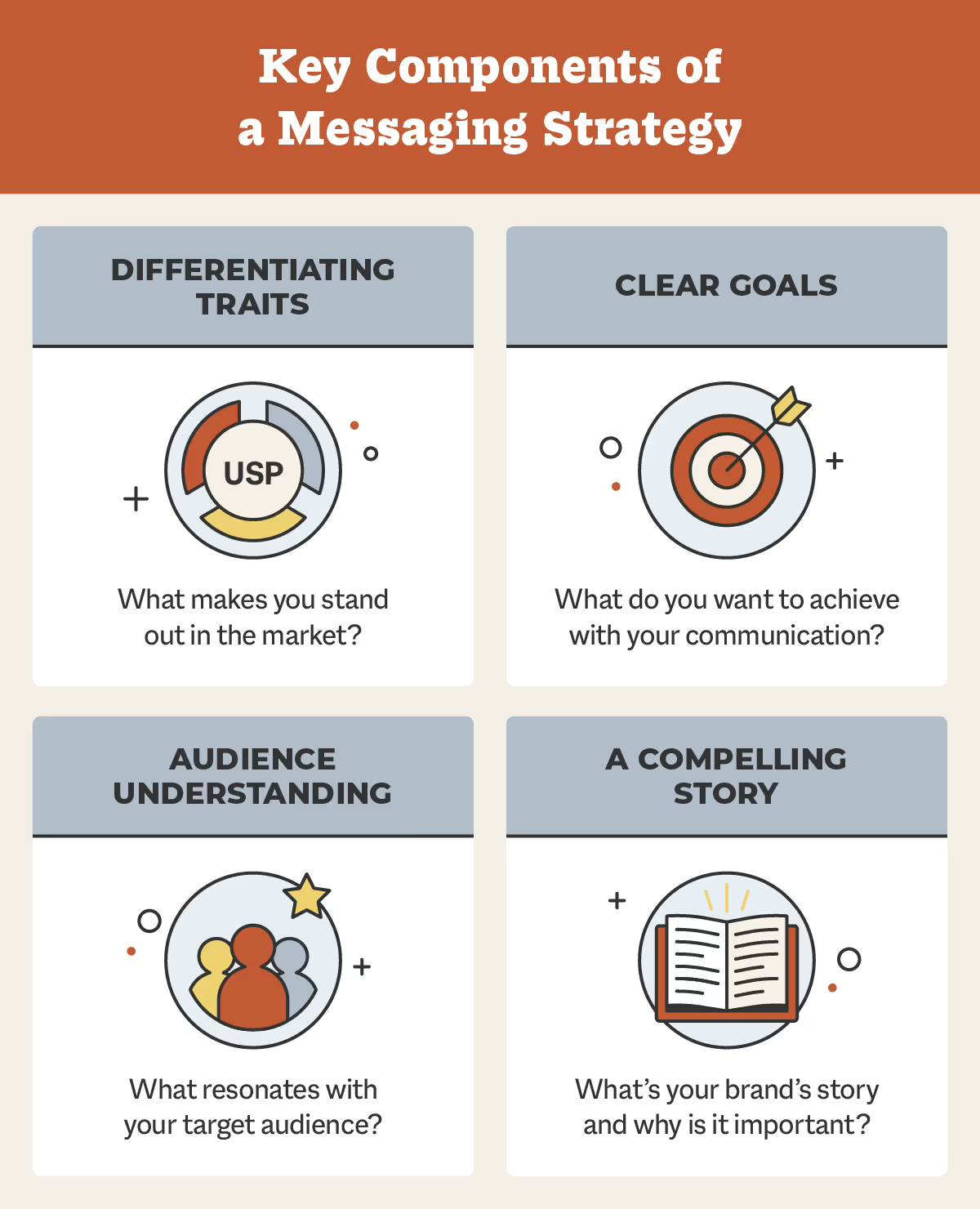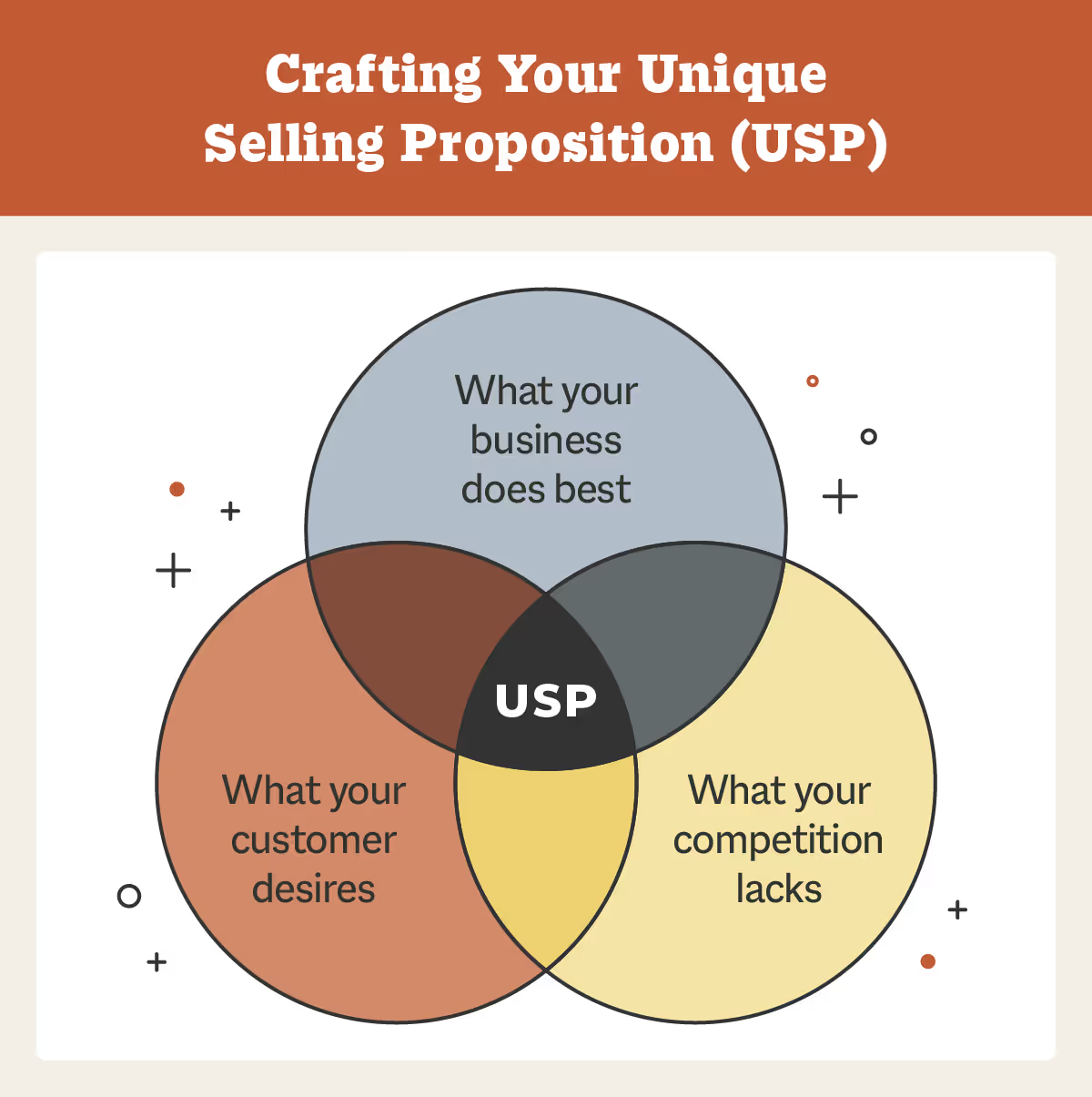How To Build an Effective Messaging Strategy
How To Build an Effective Messaging Strategy

Effective communication lies at the heart of every successful business. To truly connect with your target audience, convey your unique value proposition, and achieve your marketing goals, a well-crafted messaging strategy is essential.
In this guide, we’ll delve into everything you need to know about messaging strategies, exploring what they are, the key components that make them successful, and the steps to build a compelling brand messaging strategy.
Whether you're a small startup or an established enterprise, understanding and implementing a solid messaging strategy will set the foundation for effective communication, brand consistency, and customer engagement. So, let's dive in and unlock the power of messaging strategies for your business’s success.
What is a messaging strategy?
A messaging strategy refers to a plan that guides how a business communicates its key messages to its target audience. It involves developing a clear and consistent set of messages that effectively convey your business's mission, vision, values, key differentiators, products, services, or ideas.
Let’s say, for example, you own a trendy hair salon that offers eco-friendly and natural hair care products. Your messaging strategy would include communication that connects with your target audience and aligns with your core values, such as your dedication to sustainability and promoting clean beauty.
A well-developed messaging strategy can help your business communicate with clarity, resonate with your target audience, remain on-brand with every copy or piece of content published, and differentiate yourself from competitors.
Components of a messaging strategy
A well-executed messaging strategy is a carefully crafted combination of various components that work together to deliver a powerful and impactful message to your target audience.
By understanding and integrating these components in your messaging strategy, you will be equipped with the tools to effectively engage, inspire, and connect with your audience.

Differentiating traits
Differentiating traits, also known as unique selling points (USPs), are qualities or attributes that set a product, service, or brand apart from competitors in the market. These traits highlight the unique value or advantages that your business offers, making it distinct and memorable in the eyes of consumers.
By including your brand’s differentiating traits in your messaging strategy, you can effectively communicate your USP, stand out in a crowded market, and build a strong brand identity. By emphasizing what makes your business special, you can attract and retain customers who resonate with these distinct qualities.
Clear goals
Every messaging strategy needs to have clear goals because it helps define the purpose and desired outcomes of your communication efforts. This ensures that all messaging activities align with your objectives.
Do you want to increase your customer engagement in your email marketing campaigns? Maybe you’re looking to increase lead generation on social media.
Either way, clearly defining your communication goals is essential in a messaging strategy because it ensures that your communication efforts are purposeful, measurable, and aligned with your broader business objectives.
An understanding of your audience
Understanding your audience is a crucial component of a messaging strategy because it enables you to create targeted, personalized, and impactful messages that resonate with your audience.
By understanding your audience, including their demographics, preferences, needs, and motivations, you can tailor your messaging to resonate with them effectively. It also allows you to craft messages that speak directly to their unique experiences and desires.
This personalization enhances the audience's connection with your brand, making them more likely to pay attention to your messages and take desired actions.
A compelling story
A story can evoke emotions and create a deep and personal connection with your audience. By framing your messaging within a narrative structure, you can engage the audience on an emotional level, making your message more memorable and impactful.
When integrated into a messaging strategy, a compelling story can add depth, resonance, and impact to your communication efforts. It helps create an emotional connection with your audience, humanize your brand, illustrate your values, and differentiate you from competitors.
How to create a brand messaging strategy
Now that you know the basics of what should be included in your messaging strategy, let’s dive into the nitty-gritty of how to create a brand messaging strategy of your very own.
1. Reference your USP
Begin by clearly defining your brand identity, including its mission, values, personality, and positioning. Understand what sets your brand apart and the unique value you offer to your target audience.
You’ll need to ensure that your messaging includes the core ideas that encapsulate your business's unique selling points. If you're uncertain about how to convey your USP, you can discover it by identifying the point where your core strengths, customer desires, and the gaps in your competition intersect.

2. Create buyers personas
Next, you’ll need to gain a deep understanding of your target audience. Define their demographics, behaviors, needs, preferences, pain points, and aspirations.
To do this, start by creating an ideal customer profile (ICP). Then segment your audience and create buyer personas for each segment that you’ve created. These buyer personas will guide your messaging and help you tailor it to resonate with your audience.
3. Craft your story
Now that you’ve identified your USP and buyer personas, it’s time to craft a story to convey your business’ value to your audience. By leveraging the power of storytelling, you can evoke emotions that bridge the gap between your USP and your audience.
A brand story should encompass the origin of your brand, the story behind your service offerings, the significance of your company's mission, and similar elements that define your brand's journey.
Not only should your story evoke emotion, but close the gap between your words and actions. Essentially, you need to showcase that you not only talk the talk, but walk the walk. If a brand advocates for sustainability in their marketing campaigns, but takes no action to reduce their waste or source their products responsibly, then customers will mistrust them.
Create a narrative that conveys your genuine passion for your work and builds trust with your audience, assuring them that your words align with your actions.

4. Create your messaging guidelines
Now that you have all the necessary information to create your messaging strategy, it’s time to create a guide so that your entire team is aligned on how to convey the message.
These guidelines resemble a sales playbook but specifically guide your marketing team in crafting content and marketing messages. Some key aspects of your messaging guidelines should include:
- Your company goals, mission statement, and values
- Your USP
- Target audience and buyer personas
- Company story
- Taglines and/or slogans
- Brand style guidelines
- Tone of voice and brand personality
With this approach, you’ll be able to streamline internal feedback, boost collaboration, and promote consistency.
5. Manage all channels of communication
Naturally, once you have developed your guide, it must be readily accessible to both you and your team; otherwise, it’ll go unused. Tools like a CRM are essential because they provide a unified platform for managing content, sales materials, customer interactions, and channels of communication.
With your messaging guidelines within a CRM, all team members can access and adhere to the same messaging standards, ensuring a consistent brand voice and message across different touchpoints.
Whether your customers interact with your business by phone, email, chat, text or social platforms, they should receive a consistent message and tone.
Smith.ai follows your brand's messaging strategy
A messaging strategy serves as a vital roadmap for businesses to effectively communicate with their target audience, convey their unique value proposition, and achieve their marketing goals. It helps establish brand consistency, build trust, and create meaningful connections with customers.
At Smith.ai, we understand the significance of a tailored messaging strategy for each business. That’s why our virtual receptionists seamlessly integrate with your in-house team, providing a sense of cohesion and assurance that your outreach campaigns and inbound calls are handled with utmost professionalism and care.
With Smith.ai, you can have peace of mind knowing that your customer engagement efforts are in capable hands. To learn more about what Smith.ai can do for your business, book a free consultation.
Take the faster path to growth. Get Smith.ai today.
Key Areas to Explore
Technical Implementation Terms
Voice user interface (VUl) design
Speech recognition integration
Text-to-speech optimization
API connectivity and webhooks
Real-time data synchronization

Your submission has been received!














.svg)



